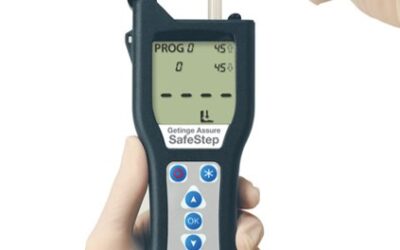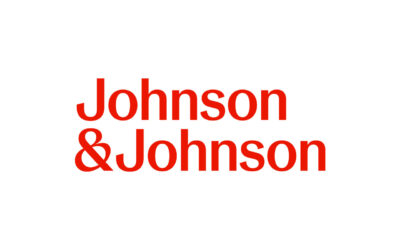Preparing for accreditation is rather like constructing a building. Both projects should begin with planning and a solid foundation. Without planning and without a solid foundation, the building will not be sound.
Planning for your accreditation should begin with having the appropriate and current AAAHC Accreditation Handbook, keeping in mind the time frame of your survey and your type of facility. Give yourself sufficient time to read and understand your Accreditation Handbook. It’s the blueprint from which to build your foundation. In addition, the glossary, although frequently ignored, provides an understanding of the terms as they are used within the Standards. The saying, “Don’t judge a book by its cover,” to some degree applies to the Standards and the terminology inside, where it is crucial to know and understand the intention of the Standard. Assuming that you know what is meant by a particular term – without consulting the glossary – may result in a poor plan and a shaky foundation. One more point: As the final step in planning, remember to establish a realistic timeline to complete your project, including submission of the application.
To continue the building analogy, before you begin to construct your project, it is necessary to identify what materials will be required for your foundation to be solid. Performing a self-assessment not only of the daily operations, but also of the ‘life’ of your facility, will help you to identify the materials needed to attain the appropriate Standards, including but not limited to new or revised written policies and procedures, personnel and medical staff education. The self evaluation should also include a review and possibly revision of how your documentation occurs: minutes of meetings, communication of information, tracking logs, quality monitoring and response to concerns, risk management processes, safety processes and clinical records.
Your survey will involve every aspect of your facility including day to day operations. Policies and procedures, written and non-written should provide an initial understanding of how the organization operates. Through direct observation, the surveyors will apply the AAAHC Standards, policies and procedures to the ‘life’ operations of your facility to assess compliance.
The first story of your building – that is, the section on which every other story is built – is equivalent to the eight Core Chapters that AAAHC has identified as applicable to every organization undergoing a survey. During a self-assessment, you should ask yourself how the core chapters are applicable to your facility not if they are applicable. Walk through each Standard and identify policies and procedures (written and nonwritten) as well as modalities of daily operations that demonstrate compliance with each Standard. If you believe a Standard is non-applicable, note it as one to revisit later to be sure that it really isn’t applicable to your organization. (Tip: Beside each Standard, make a reference notation directing you to the policy, procedure or operational process that may demonstrate either compliance or non-applicability.) Read each Standard for intent in order to avoid confusion and possible misinterpretation. Chapter 1, Rights of Patients, contains two similar Standards. These are: 1 G.4 (living wills, medical power of attorneys or other directives that may affect health care and which is almost always applicable to all organizations), and F.8 (advanced directives) which is based on requirements of the state or federal laws and regulations.
Your second story will consist of a few of the 19 Adjunct Chapters as identified by AAAHC. A careful review of each of these chapters is required to identify the ones that will be applicable to your facility. Frequently, chapters that would be relevant are overlooked or quickly dismissed.
Be sure to read the individual Standards of each adjunct chapter not just the title of the chapter before deciding if the Standards and chapter link to the life of your operations. (Tip: Some Standards within an adjunct chapter may or may not be applicable; therefore, read them carefully.) Chapter 13, Diagnostic and Other Imaging Services, indicates that Standards A through F will be applied to organizations providing only diagnostic imaging services, while all Standards will be applied to organizations that provide imaging services used for diagnosing, monitoring or assisting with procedures. As with the core chapters, identify how each Standard is met within your facility.
It is at this point that too many facility management teams have the misconception that they are ready for their survey. However, as with our construction project, the planning, development and reassessment are ongoing and may require revisions while waiting for the surveyors to arrive. When you feel you are ready for a survey and perhaps have even been through a mock survey, you should continue to perform self assessments of specific areas, and even members of the staff, to assure that everyone has a working understanding of written and non-written policies and procedures and processes. (Tip: If the policy is unwritten and you ask three members of your staff the same question, you should receive the same answer.) If something isn’t working, then revise and document the rationale for the revision.
Survey preparation, like the construction project we’ve been likening it to, is fluid and must be continuous. During each survey, surveyors may spend more time on one component than another; therefore, an issue not being identified at one survey does not automatically transform it to being correct at the next survey. Insufficient attention to the details of the current AAAHC Standards and not having an awareness of the ‘life’ of operations in your facility may result in a problematic survey. Preventing a problematic survey, and achieving a successful outcome of the survey, is a result of good planning, a solid foundation and ongoing maintenance of your project.
Nancy “Jo” Vinson has been involved in ambulatory health care for over 30 years in a variety of roles, as a clinician, educator, administrator and consultant, practicing as a Registered Nurse, CEO and Administrator of surgery centers, Chief Operating Officer and Resource Manager. She is a registered nurse and a Board Certified Surgery Center Administrator. Jo is also a surveyor for AAAHC and sits on the AAAHC Standards Committee.










